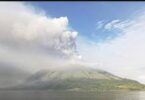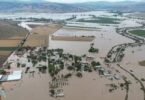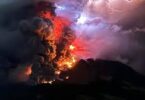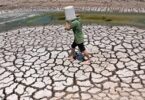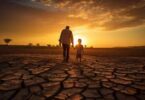WASHINGTON (USA TODAY): The real-life version of Godzilla, the Komodo dragon, is now an endangered species, and experts believe the species is headed toward extinction.
Recently, the largest lizard in the world had been moved from a vulnerable species to an endangered one on the International Union for Conservation of Nature’s Red List. Last week, a report from the conservation organization revealed how bad the situation has gotten for the Komodo dragon.
Komodo dragons, which can grow up to 10 feet long, have venomous saliva and can easily take down a water buffalo, They reside only in Indonesia at the Komodo National Park, a UNESCO World Heritage site, and on a few nearby islands. They are a protected species and rarely come in contact with people, with only a few documented attacks on humans.
So why is the species in danger? Climate change.
The IUCN says rising temperatures and sea levels are to blame, as they expect the dragons’ suitable habitat space to be reduced “by at least 30% in the next 45 years.” As for some of the creatures living on the unprotected nearby island of Flores, human activity has resulted in significant habitat loss, as well as hunting for the same food resources.
The expected Komodo dragon population decline in the coming decades comes as the IUCN estimated around 1,380 adults and 2,000 juveniles remain. In 1994, The New York Times estimated there were 5,000-8,000 in existence.
“The idea that these prehistoric animals have moved one step closer to extinction due in part to climate change is terrifying,” Andrew Terry, conservation director of the Zoological Society of London, said in a statement.
Should the population indeed decline, the Komodo dragon would enter the critically endangered level before it would be labeled as extinct in the wild. Some zoos across the world house Komodo dragons.
The IUCN’s report also included that 37% of the sharks and rays the organization keeps track of are also being threatened with extinction. Overall, the organization says over 38,500 species are facing extinction.

